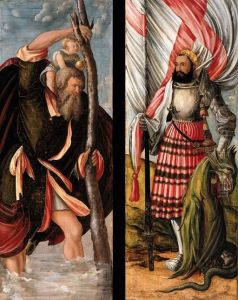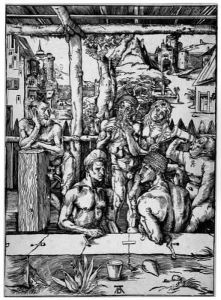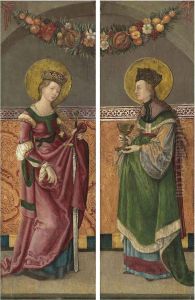Hans Durer Paintings
Hans Dürer, born in 1490 in Nuremberg, was a German Renaissance painter, draftsman, and engraver. He was the younger brother of the more famous Albrecht Dürer, a leading figure in the Northern Renaissance. Despite being overshadowed by his brother's monumental legacy, Hans established his own reputation as a talented artist, primarily in the realms of portrait painting and printmaking. His early life was deeply influenced by the artistic environment of his family, and he received his initial training from his father, Albrecht Dürer the Elder, who was a goldsmith.
After his father's death, Hans likely continued his apprenticeship under the guidance of his brother Albrecht, who had already by then established himself as a master artist. In the 1520s, Hans Dürer's career took a significant turn when he moved to Krakow, Poland. There, he worked for King Sigismund I the Old of Poland, serving as a court painter. This period was marked by numerous commissions for the Polish court, including portraits, religious paintings, and designs for coins and medals. His work in Poland distinguishes him as one of the notable Northern Renaissance artists who found success and recognition outside of the German-speaking world.
Despite the lack of extensive documentation on his life and work compared to his brother, Hans Dürer's contributions to Renaissance art are noteworthy. His style, while influenced by his brother's detailed approach, also displayed his own unique tendencies towards a more relaxed and naturalistic portrayal of subjects, especially evident in his portraiture. His surviving works, though not as plentiful or well-known as Albrecht's, provide valuable insights into the artistic exchanges between Northern and Eastern Europe during the Renaissance.
Hans Dürer's career in Poland lasted until the late 1530s. He passed away in 1538, leaving behind a relatively modest but significant body of work that continues to attract the interest of art historians and enthusiasts. His life and career exemplify the spread of Renaissance artistic values beyond Italy and the Germanic regions, highlighting the interconnectedness of European art during this period.


